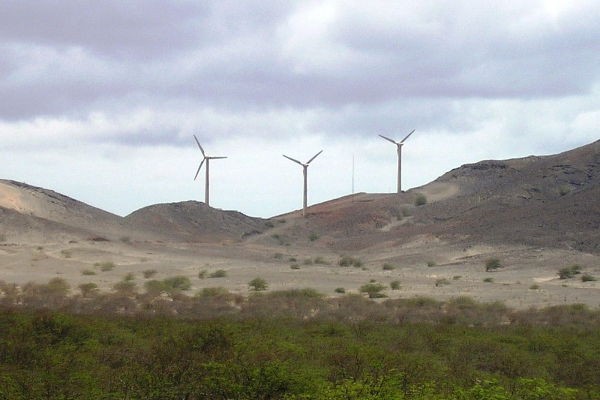Cabeolica Wind Farm in Cape Verde
The Government of Cape Verde brought large scale renewable energy to the archipelago by setting up a public-private partnership (PPP) to develop, build, finance and operate four wind farms. Debt funding was secured from the European Investment Bank and the African Development Bank. The partnership succeeded by setting up synergies and creating an effective model to bring the project from conception to realisation.

The challenge:
Energy supply is a challenge for small and remote islands. They are generally not connected to a larger grid, and dependant on expensive fossil fuel imports. Cape Verde, an archipelago off the northwest coast of Africa, is typical of this and for a long time relied on imported diesel fuel to supply the island’s 500,000 inhabitants.
The measure:
The Government of Cape Verde invested in wind power to increase the security of supply, and share of renewable energy, on the archipelago.
To develop, build, finance and operate the Cape Verde Wind Farm project, a public-private partnership (PPP) was conceived; the first of its kind for wind power in Sub-Saharan Africa. The PPP is comprised of the Government of Cape Verde; Electra, the government owned utility company; InfraCo, a publicly financed project development company; and Africa Finance Corporation (AFC) and Finnfund who were providing finance. The project company, Cabeolica S.A., was established by the partners in 2009 and power generation began in September 2011.
Debt funding was secured from the European Investment Bank (€28.4 million) and the African Development Bank (€14.2 million).
In total the project installed 30 turbines, 4 substations and 33km of power cable, across four islands (Boa Vista, Sao Vicente, Sal and Santiago). Together they have added over 28 megawatts (MW) of capacity.
The introduction of wind power to Cape Verde has dramatically reduced the country’s importing of heavy fuel oils and diesel. The turbines - benefiting from favourable Atlantic trade winds - now provide 25% of the island’s energy needs. Around 100 construction jobs and 10 operational jobs were also created.
Lessons learnt:
The Government of Cape Verde had previously failed twice to launch the project, with private sector investors put off by the complexity of the project – all trucks, cranes, equipment, etc. had to be imported. This time, by setting up synergies in the PPP, and utilising the expertise of InfraCo Africa, they were able to address the complex legal and regulatory issues, and successfully develop the project. InfraCo is funded by the Private Infrastructure Development Group with support from international development donors including DFID, IrishAid and the World Bank.
Further deployment:
This PPP sets a new model for the development of large scale renewable energy projects and has high potential for replication. GML 8
Links:
https://eleqtra.com/wordpress/wp-content/uploads/2015/09/InfraCo-Africa-Project-Case-Study-Cabeolica-2015.pdf
http://www.eib.org/en/infocentre/press/releases/all/2010/2010-236-european-investment-bank-and-african-development-bank-finalise-financing-agreement-for-cape-verde-wind-farm.htm
By Manuel de Sousa [GFDL (http://www.gnu.org/copyleft/fdl.html) or CC BY-SA 3.0 (https://creativecommons.org/licenses/by-sa/3.0)], from Wikimedia Commons
